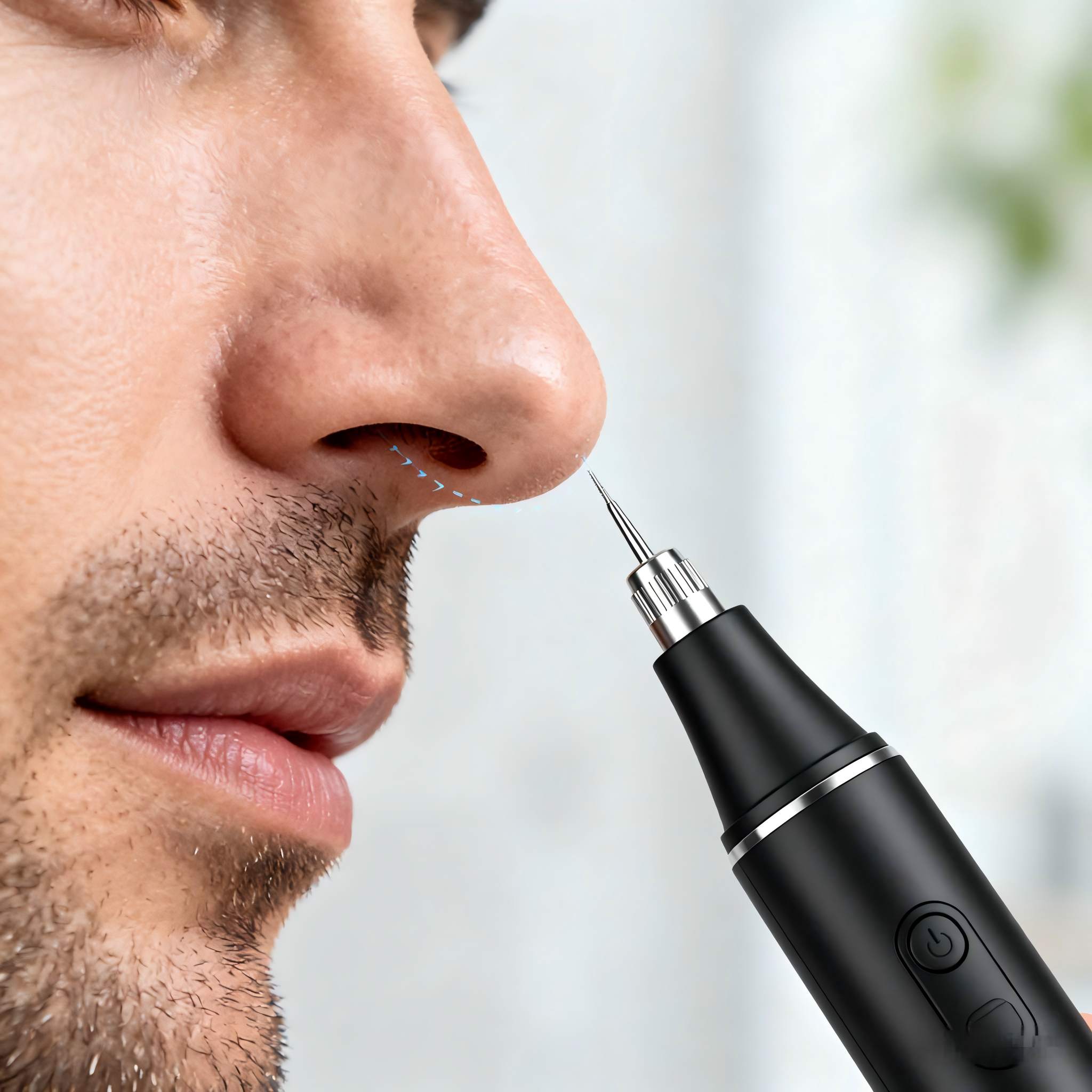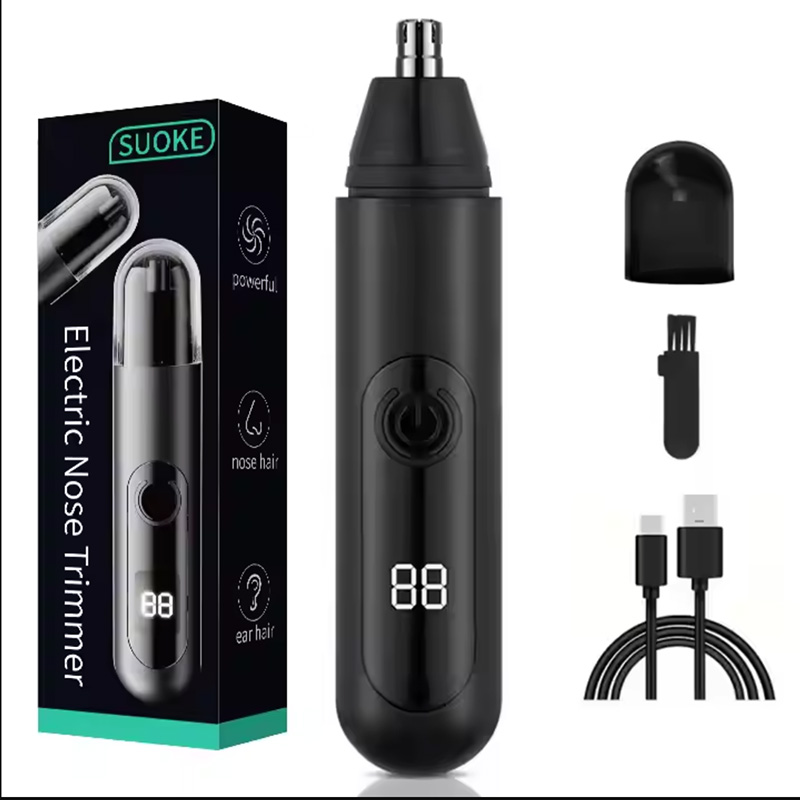
Nose hair trimmers seem like a piece of cake to use—just aim, buzz, and you’re set, right? But if you’ve ever ended up with a sloppy trim, a sore schnoz, or a trimmer that’s totally shot, you’re likely goofing up somewhere. These tiny gadgets are meant to keep you looking sharp and feeling good, but messing them up can leave you with itchy skin, crummy results, or a trashed tool. Let’s run through the 7 common nose hair trimmer mistakes you’re probably making and how to sidestep them for a smoother, safer grooming routine.
Whether you’re just starting out or a grooming whiz, these tips will help you get the best from your nose hair trimmer. So, let’s jump in and figure out what’s going wrong—and how to make it right.
Imagine you’re in the shower, water’s pouring down, and you grab your nose hair trimmer for a quick spruce-up. Sounds like a time-saver, doesn’t it? But if your trimmer isn’t built for water, you’re asking for a mess. A bunch of trimmers, especially the low-budget ones, can’t handle moisture. Dunking them or letting steam hit them can zap the motor or dull the blades real quick.
Check the IPX Rating: Pick a trimmer with at least an IPX7 rating. That means it can handle being underwater up to a meter for half an hour. For example, SUOKE Electric’s KHL-FHB01 nose hair trimmer is fully washable, so it’s perfect for wet or dry use.
Keep Non-Waterproof Trimmers Dry: If your trimmer isn’t marked as washable, don’t let water anywhere near it. Use a brush to clean the blades instead.
Dry It Off Good: Even waterproof trimmers need a thorough dry after rinsing. This keeps rust and funky bacteria from setting in.
I once rinsed a non-waterproof trimmer, thinking a little splash was no big deal. Boy, was I wrong. It started humming like a dying bee, and I had to chuck it in a month. Do yourself a favor—check the specs first!
Let’s keep it real: cleaning a nose hair trimmer isn’t exactly a party. It’s super easy to toss it in a drawer and forget about it. But blowing off this step can clog the blades, wreck the trimmer’s performance, and even cause skin infections from gross germs piling up.
Brush Off the Junk: Grab the little cleaning brush that comes with your trimmer, like the one SUOKE Electric tosses in, and sweep away hair and gunk after each use.
Rinse If It’s Okay: If your trimmer is washable, run the blade under water and dry it completely.
Oil the Blades: Every few trims, add a drop of lubricating oil to keep the blades sharp and slick. SUOKE Electric says to do this every three or four uses to make the blades last.
A 2020 study in the Journal of Hospital Infection found that grimy grooming tools can carry nasty bugs like Staphylococcus aureus. So, a quick clean isn’t just about keeping your trimmer running—it’s about keeping your nose in good shape too.
We’ve all done it—pushing the trimmer way up your nose to snag every stray hair. It’s not just painful; it can make your skin sore, cause little cuts, or even spark a nosebleed. Nose hair isn’t just there for looks—it traps dust and allergens. If you over-trim, you’re leaving your nose wide open to irritants.
Go Light on Pressure: Let the trimmer do its thing. Gently guide it along the inside edge of your nostril. Don’t shove it in.
Trim Just a Bit: Only go after the hairs sticking out where people can see them. Leave some behind to do their job.
Pick a Safe Trimmer: Get one with a rounded tip, like SUOKE Electric’s KHL-FHB01. It’s made to avoid scratches and cuts.
A pal of mine once whined about a sore nose after trimming. Turns out, he was basically digging a tunnel up there! If it feels like you’re going too deep, you are. Back off a bit.
Worn-out blades are a total bummer. If your nose hair trimmer is yanking hairs instead of slicing them clean, your blades need some TLC. Crummy blades hurt, leave patchy trims, and can make your skin red and grumpy.
Swap Blades Regularly: SUOKE Electric says to replace blades every 6 to 12 months, depending on how often you trim.
Sharpen or Oil Them: Some trimmers let you sharpen blades. But usually, a drop of oil keeps them nice and smooth.
Check for Damage: Look for nicks or rust on the blades. If you see any, grab a new set.
Here’s a quick cheat sheet for blade care:
| Task | How Often | Why It’s a Big Deal |
| Clean blades | After every use | Stops clogs and keeps germs away |
| Add lubricating oil | Every 3–4 uses | Keeps blades sharp and cuts nice and easy |
| Replace blades | Every 6–12 months | Gives you a clean, pain-free trim |
I once let my blades go way too long without oiling. The trimmer started pulling hairs, and let me tell you, it was no fun at all. A little care saves a lot of ouch.
Not every trimmer is an all-star at everything. Using your nose hair trimmer to shape your eyebrows or trim ear hair might seem like a quick win, but it can lead to wonky results or even a nick. Nose hair trimmers are built for the delicate skin inside your nostrils. Other tools have different blade designs and power settings.
Use It for What It’s Made For: Stick to a nose hair trimmer for nose and ear hair. For eyebrows, get a trimmer with adjustable combs or a dedicated eyebrow tool.
Check Its Range: SUOKE Electric’s KHL-FHB01 is good for nose, ear, and eyebrow trimming, but it’s still designed with nasal safety first.
Skim the Manual: Yeah, manuals are boring. But they tell you what your trimmer can handle.
I once tried using my nose trimmer on my sideburns, thinking it’d save a minute. Total mistake. I ended up with patchy sideburns and looked like I got a haircut from a toddler for a week.
A dead battery can totally derail your grooming game. Modern nose hair trimmers, like SUOKE Electric’s USB-rechargeable KHL-FHB01, rely on batteries that need a bit of love. Overcharging, letting the battery hit zero, or using a junky cable can make it give out sooner.
Charge It Smart: Use the USB cable that came with your trimmer. Don’t leave it plugged in overnight.
Store It Right: Keep your trimmer in a cool, dry spot to protect the battery.
Check the Cable: If your trimmer won’t charge, look for frayed wires or try a different cable. SUOKE Electric’s support team can help figure it out.
I once forgot to charge my trimmer for months. When I needed it for a last-minute event, it was dead as a doornail. Now I give it a quick charge every couple of months, even if I’m not using it.
Who actually reads the manual? I know, it’s tempting to pitch it in the trash. But nose hair trimmers come with tips on how to use, clean, and care for them. Skipping those can lead to screw-ups, worse performance, or even a voided warranty.
Flip Through the Manual: Take a couple of minutes to check it out. It covers stuff like cleaning and whether it’s safe for wet use.
Look at the Specs: SUOKE Electric’s website (yiwusuoke.com) has all the details for models like the KHL-FHB01, like power source and cleaning tips.
Ask for Help: If you’re stuck, SUOKE Electric’s customer service is ready to lend a hand.
Skipping the manual is like trying to build a bookshelf without the instructions. You might get there, but it’s gonna be a hassle. I learned this the hard way when I trashed a trimmer by cleaning it wrong.

Before we wrap up, let’s talk about SUOKE Electric, a big name in personal care tools based in Yiwu, Zhejiang. They’re all about quality and fresh ideas, crafting nose hair trimmers, electric shavers, and other grooming gear that meet strict standards like CE and ROHS. Their KHL-FHB01 nose hair trimmer has a cool design with practical features like USB charging, IPX7 waterproofing, and easy-to-grip handles. Whether you’re a regular user or a business looking for OEM/ODM deals, SUOKE Electric offers solid, affordable options that fit your needs. Their products are sold from Europe to Southeast Asia, and their focus on keeping customers happy makes them a great pick for grooming essentials.
Dodging these 7 common nose hair trimmer mistakes can make your grooming routine a breeze. Pick the right tool, keep it clean, and use it gently. You’ll get cleaner trims, a trimmer that lasts ages, and a way more comfortable experience. SUOKE Electric’s lineup, like the KHL-FHB01, is built to make grooming simple and effective, with features that work for beginners and pros alike. Take a sec to rethink how you’re using your trimmer. You’ll be blown away by how much better it can work.
Nope, don’t even try it. A non-waterproof nose hair trimmer can get wrecked by water, messing up the motor or blades. Look for an IPX7 rating, like SUOKE Electric’s KHL-FHB01, which is cool for wet use. If your trimmer isn’t waterproof, stick to dry trimming to avoid a big repair bill.
Clean it every time you use it. This keeps hair and germs from piling up. For SUOKE Electric trimmers, use the brush they include or rinse the blades if it’s waterproof. It takes less than a minute and keeps your trimmer running like a champ.
Worn-out blades yank hairs instead of cutting them. That hurts and leaves patchy trims. SUOKE Electric suggests swapping blades every 6 to 12 months, depending on use, for a smooth, pain-free trim.
Could be a low battery, clogged blades, or a junky cable. Check the battery and clean the blades good. If it’s still acting weird, try a new USB cable or hit up SUOKE Electric’s support team for help.
Some trimmers, like SUOKE Electric’s KHL-FHB01, are good for nose, ear, and eyebrow hair. But using a nose hair trimmer for other stuff without checking can lead to bad results or nicks. Take a quick peek at the manual to see what’s safe.